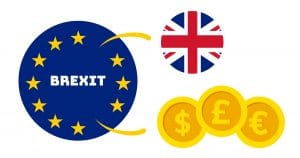Boris Johnson and his Brexit Plans: How will this affect the sterling in the forex market?
19th August 2019
Written by OspreyFX News Team
The Boris Johnson effect: his election and your forex trading
It’s already been a month since Boris Johnson got elected as the new Prime Minister of the United Kingdom.
The forex market’s reaction to this new British political situation was instantaneous, with the sterling dropping drastically on Boris Johnson’s first day on the job.
The currency dropped again last Friday night, with the pound-to-euro exchange rate trading at around 1.0639 at the start of the new week after falling 2.61% in the week before.
This means that the sterling is almost on par with the Euro, with its value reaching a new two-year low, causing concerns about prospects for the country’s economy if the United Kingdom leaves the EU without an agreement.
Why did the sterling fall following Boris Johnson’s election as prime minister?
The forex market is constantly reacting to political situations, natural disasters, wars or anything that is going to have a radical change on economic circumstances in a country. Fluctuations in currencies usually signify expectations of how a particular market will perform.
Simply put, Boris Johnson’s election as Prime Minister forecasts a dire future for the United Kingdom. Until now, whenever the prospect of a ‘no deal’ exit has arisen, this has damaged the sterling while anything that reduced the ‘no deal’ risk has benefited it.

What does this mean for your forex trading?
There are speculations that the fall in the trade deficit could be a one-off and that the drop in demand for imports merely coincided with the fall in the value of the sterling.
However, there is clear evidence that the sterling is directly affected by the probability of a no-deal Brexit which Boris Johnson vehemently insists on.
According to Oliver Brennan from TS Lombard, investors are now predicting nearly a 50% chance of a no-deal Brexit. This means that a no-deal Brexit could take the pound to a range of $1.15 to $1.20. If the new British administration manages to avoid this, it could see the sterling climb to a range of $1.25 to $1.30.
What is the future for the sterling?
Traders should be closely watching two things: the new prime minister’s attitude towards Brexit negotiations as well as the tone from Brussels towards Johnson and his new government.
If the probability for a no-deal Brexit is high, then traders and investors will see a short-term plunge for the sterling.
If this scenario plays out, Bloomberg interestingly points out that a ‘no-deal’ could create an amazing buying opportunity for traders but only after the economy has been utterly destroyed.
For sure, when it comes to the sterling and its volatile sensitivity, traders will find that any pairing will make for a very interesting (albeit very risky) trade-off.
Subscribe to our newsletter to receive our weekly updates + more straight to your inbox!